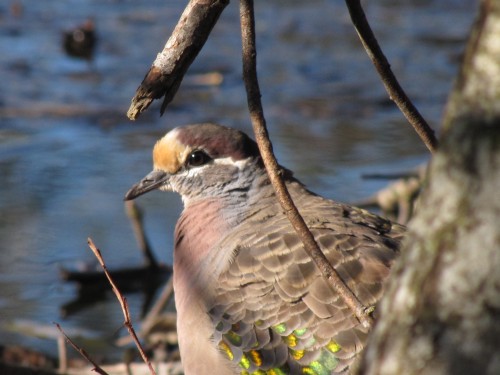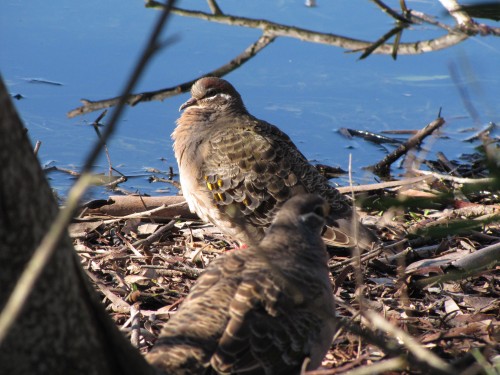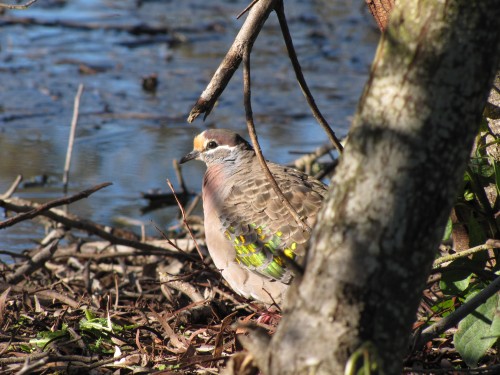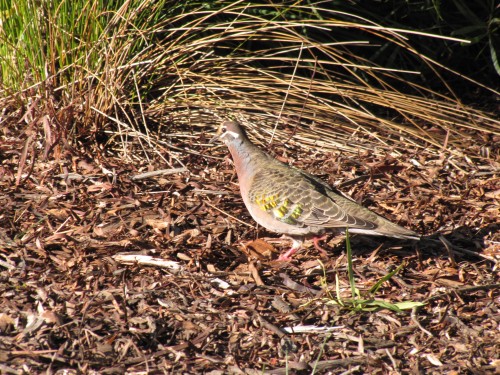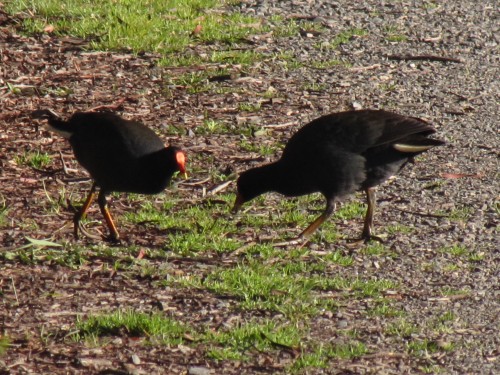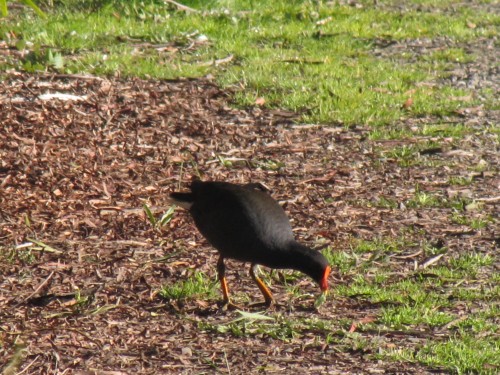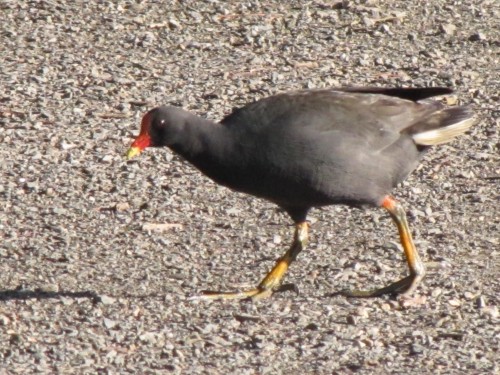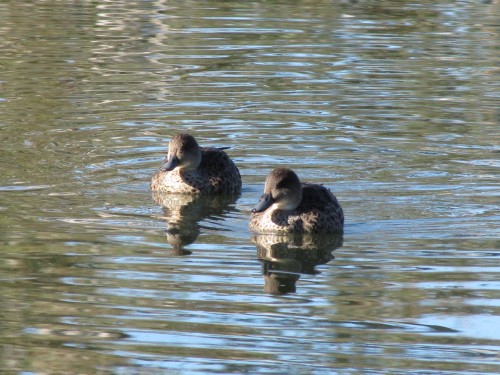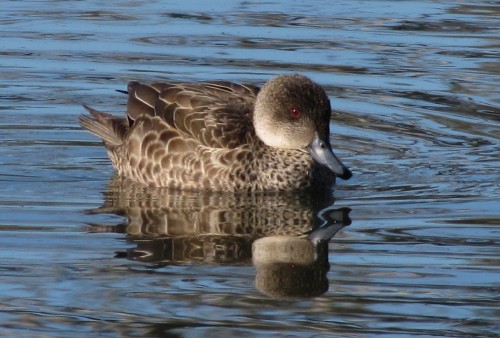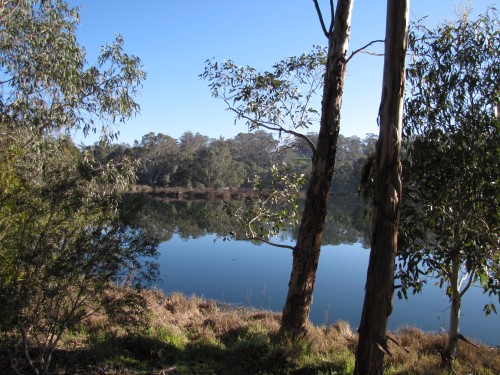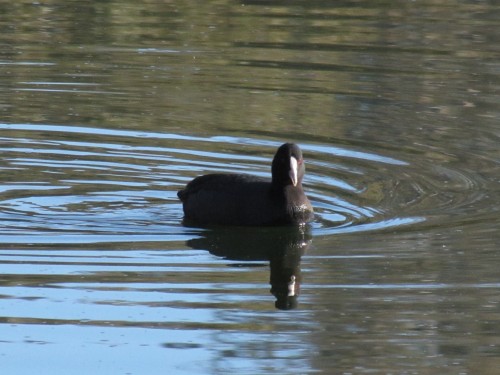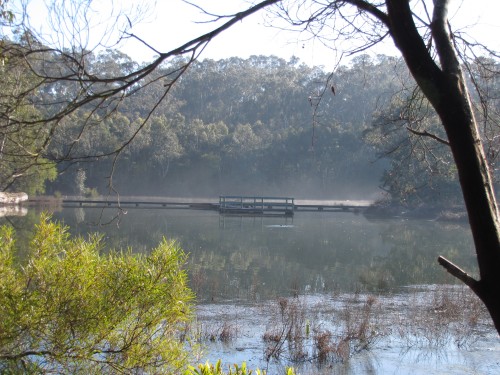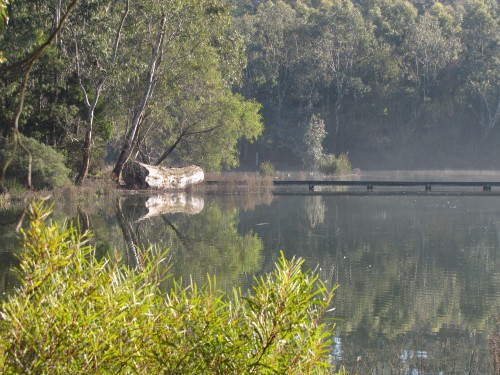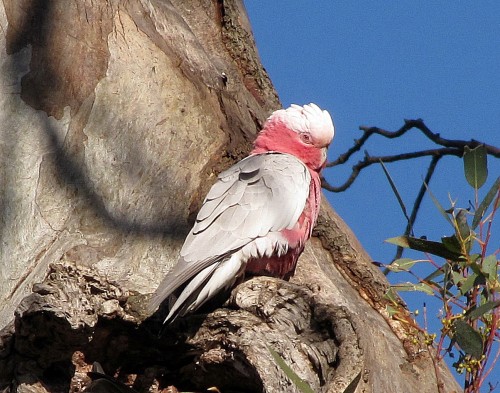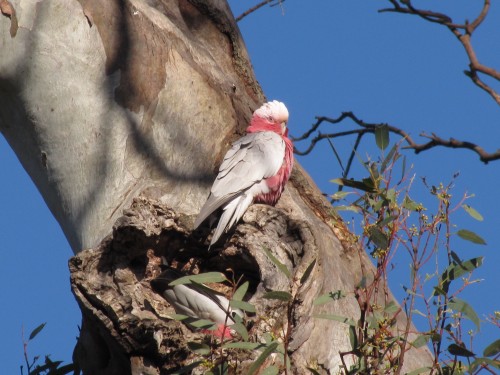Beautiful Bronzewing Pigeons
Common Bronzewing Pigeons are, on first appearance, a reasonably plain bird. It is only when one gets an individual sitting quietly in a sunny position that you get a full appreciation of the subtle and quite beautiful colours in the plumage of this species. This is what happened to me recently on a visit to the Laratinga Wetlands in Mt Barker, South Australia. I seem to recall seeing at least three birds on that visit; there may have been more that I didn’t see.
In my experience Common Bronzewings are very flighty, nervous birds and will fly off rapidly as you approach. This can make them sometimes hard to photograph in the bush. At Laratinga they have obviously become accustomed to the hundreds of local people and tourists who visit this site every day. Walkers, joggers, photographers and cyclists frequently use the many good paths around the dozen or so ponds making up the wetlands, so it is not surprising that the local bronzewings will tolerate a person coming to within a few metres.
The birds in today’s photos were only about three metres from me so I was able to get some close up shots. The early morning sun shining on their feathers shows off some of the beautiful colours.
Further reading:
- Laratinga wetlands – articles from my archives
- Bronzewing Pigeons at the Australian Reptile Park
- Flock Bronzewing Pigeon
- Speeding Bronzewing Pigeon
Dusky Moorhens at Laratinga Wetlands
Over recent posts here on my site I have featured some of the birds I saw and photographed on a recent visit to the Laratinga Wetlands in Mt Barker, South Australia. As I have stated before, this is one of my favourite birding places to visit because of the large number and variety of birds present all year on the dozen or so ponds which make up the wetlands. Besides, it is about a half hour drive from my home.
Apart from the ease of getting there, and the good variety of birds, another benefit is being able to access the various ponds via a great network of walking paths. These paths are used daily by hundreds of locals and visitors for walking, running, cycling and birding. From the paths visitors have a great view of the birdlife and this makes photography a delight there. On many occasions the paths themselves afford good photographic opportunities.
A example of this on my most recent visit was a small flock of Red-browed Finches drinking from some puddles on the path. Unfortunately the puddles were in deep shade, and the birds constantly moving, so my shots of them turned out very blurry. You get that.
On the other hand, today’s photos feature several Dusky Moorhens feeding on the grassy verges of one of the paths – and in full sunlight. It made it a little easier to get some photos, but on the downside, they were a little skittish.
Dusky Moorhens are often found near bodies of water like the Laratinga Wetlands and often associate with both Purple Swamphens and Eurasian Coots. They found throughout the eastern half of the Australian mainland as well as SW Western Australia and Tasmania.
Further reading:
Cruising Grey Teals, Laratinga Wetlands
A few days ago I featured a Pacific Black Duck I saw at the Laratinga Wetlands in Mt Barker.
Today it is the turn of another common species, the Grey Teal.
This great birding site is just over half an hour’s drive from my home in Murray Bridge here in South Australia. I don’t get to visit often enough. I know of birders who visit this place almost every day. The birding is usually very good with many opportunities for bird photography.
The ponds making up these wetlands have wide tracks along their edges and many locals and visitors use these tracks on a daily basis for walking, cycling and jogging. The adjacent picnic grounds are also very well set out and maintained.
On a recent visit I took these photos of some Grey Teal cruising along across one of the ponds. Many birders and photographers probably overlook this common species. It can be found in many parts of Australia wherever bodies of water exist.
I have seen lakes where there were thousands of these ducks. Just because they are common does not mean that they cannot be photographic. I like the photo above, but the one below is something special, in my opinion. The photo has only been cropped a little and has not been enhanced in any other way.
For more photos and further reading about the birds of Laratinga, click here.
Good birding.
Trevor
How’s the serenity?
How’s the serenity?
Most Australians will recognise that quote from the laconic Aussie movie “The Castle“.
It sure is a scene filled with serenity, early one frosty morning last week. The photos in today’s post were taken at the Laratinga Wetlands just east of Mt Barker in the Adelaide Hills. A series of ponds make up this wonderful birding and picnic spot. While one could perhaps buy a lovely home overlooking this spot, or within a few minutes’ walk, I really have to burst your bubble or shatter your dream.
The ponds make up the local town’s sewage works!
In reality, it is far, far better than it sounds. First, there is no smell. None. Second, the environment has been wonderfully landscaped with Australian native trees, bushes and ground cover plants. Third, the local authorities have created a lawned picnic area complete with shelter sheds – it rains quite often in Mt Barker – and well kept, clean toilets. The tracks around each of the ponds are used daily by hundreds of locals and visitors like myself for photography, walking, cycling, running or just birding. The birdlife is always abundant and interesting.
The photo below shows just one of the many birds I saw there last week, a Eurasian Coot. The other photos below show one of the ponds shrouded in early morning misty fog.
Galahs at Laratinga Wetlands
Earlier in the week my wife had several appointments in Mt Barker which is about half way between home here in Murray Bridge and Adelaide. Her appointments were to take several hours, so took the opportunity to visit the Laratinga Wetlands on the eastern edge of Mt Barker.
The Laratinga Wetlands consist of a series of ponds which essentially deal with the town’s sewage and storm water. The treated water is later recycled into local agricultural use. The series of large ponds which make up the wetlands have been landscaped with both plants and lawns. A picnic area is provided for the public, including barbecues and toilets. Many local people and visitors use these facilities and the tracks around the ponds are popular with birders, walkers, runners, and cyclists.
Over coming days I will share some of the bird photos I took on my most recent visit. Today’s photos show a female Galah sunning itself on the trunk of one of the huge eucalypt trees surrounding the wetlands. I know that this one is a female because of the red eye. Meanwhile, I presume that the male is busy in the hollow below her, cleaning out the hollow and preparing it for nesting later in the season.
Further reading:
